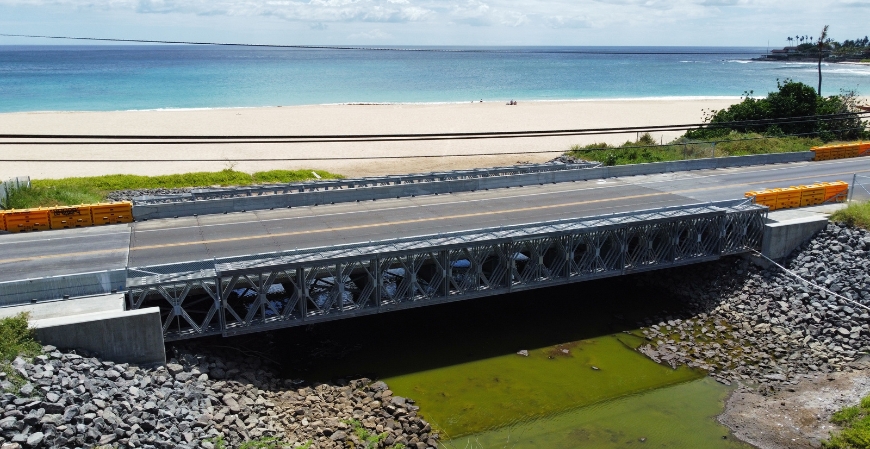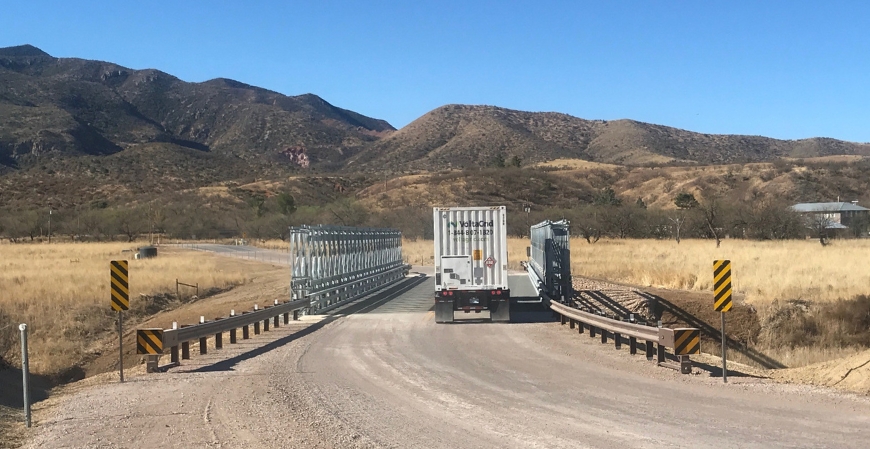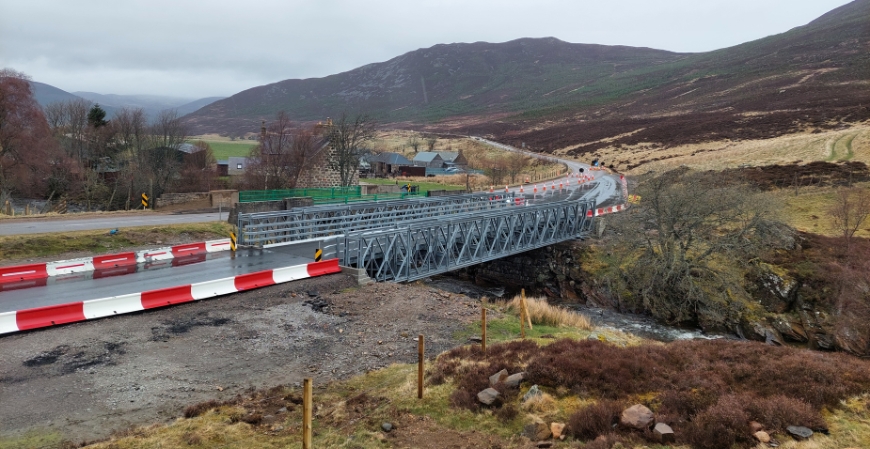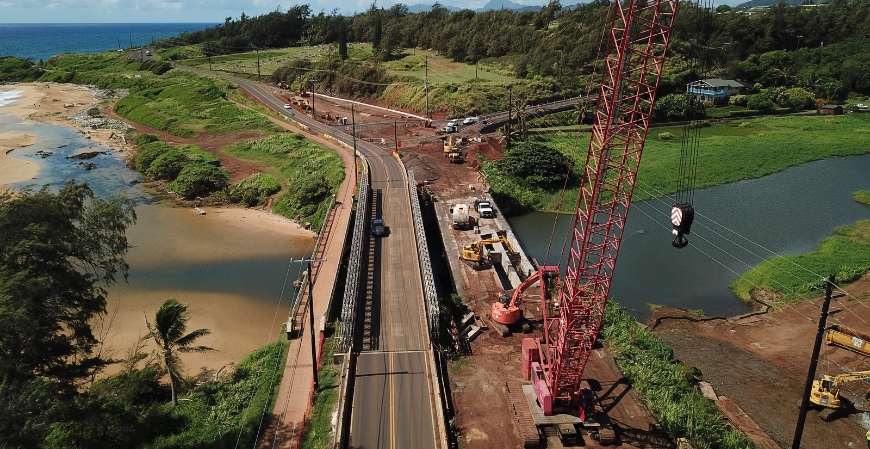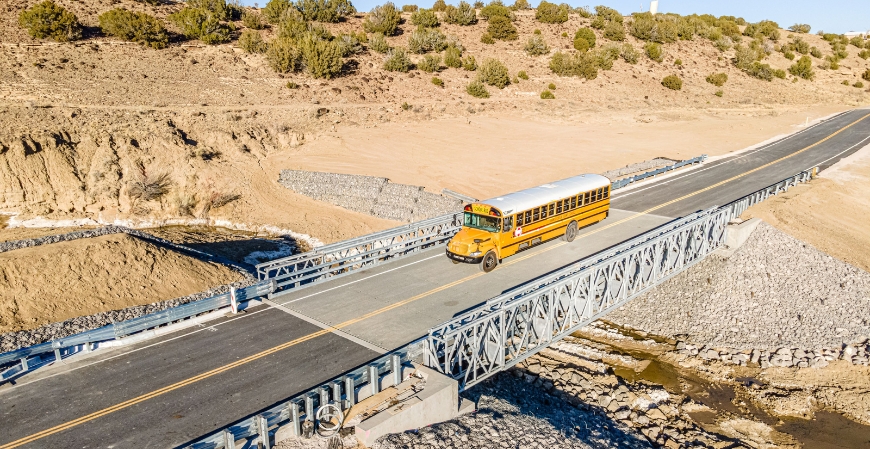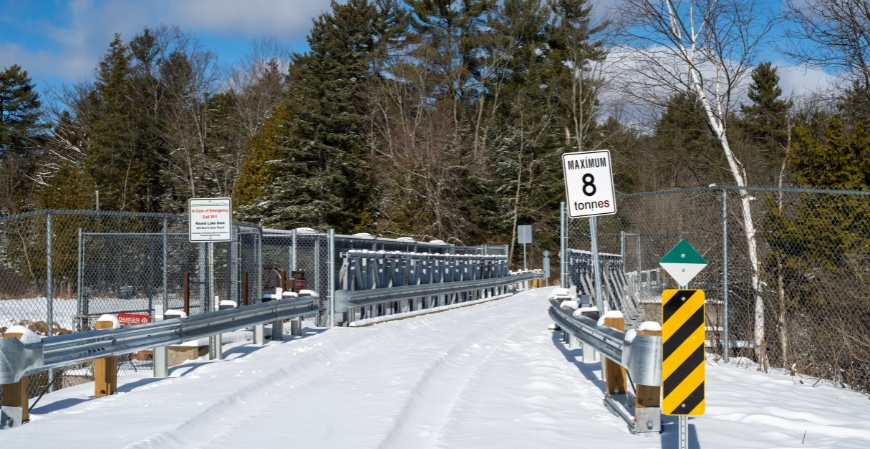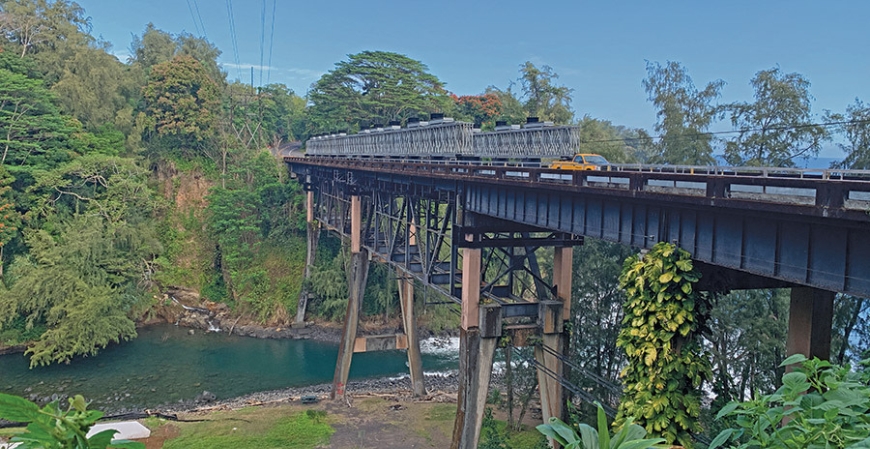
Modular panel bridge enables rapid installation with minimal equipment
The Town of Tununak, Alaska is located in a remote location on the northwest side of Nelson Island in the Bering Sea. It has a population of approximately 325 people whose only connection to the outside world is by air, as there are no roads. The current airport has one gravel runway and is only big enough for very small aircraft. Additionally, it is plagued by cross winds, fog and poor runway conditions so it is frequently closed to air traffic. As a result, the airport has been relocated to a more protected location, which will also allow for larger aircraft to improve access for freight and people.
Access to the new airport requires crossing a stream. Federal Highways selected an Acrow bridge for the crossing due to its unique modular design, which makes it ideal for remote construction. Because Acrow bridges can withstand heavy loads, construction traffic was able to access the construction site via the Acrow bridge, which made the project more economically viable. In addition, Acrow bridges are made in the USA, and therefore meet federal requirements for U.S. content and manufacturing, satisfying the Buy America Act of 1993.
Modularity was a key aspect of the design in this remote area. Constructability was also a key requirement; smaller cranes and hand tools can get out to Tununak, but larger equipment is cost prohibitive.
The State of Alaska already owns several Acrow bridges. Two of these in Kenai are exactly the same size as would be required for the Tununak airport access. This made estimating the assembly and installation of the bridge relatively easy as the Federal Highway had previous experience with the bridge specifications.
The bridge parts were shipped to Seattle in 2013, to arrive with the last barge of the season headed to Tununak. Tununak cannot be accessed by barge in winter due to sea ice.
Construction was scheduled to start in January 2014 but was delayed due to moderate temperatures, which made the site difficult to access for construction equipment, as permafrost is needed to allow heavy equipment to operate in the marshy conditions.
The 160ft x 24ft, 2 lane bridge was finally assembled with small equipment and placed by full cantilever launch method in April 2014.
The bridge will have a temporary wooden deck installed by the contractor to allow for their construction equipment to use the bridge until the airport is completed. Once construction is complete, the wooden deck will be removed and replaced with permanent Epoxy coated steel decks.

